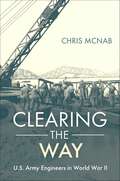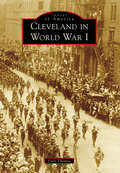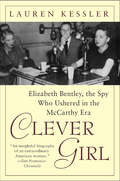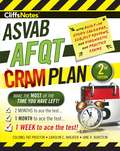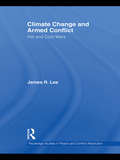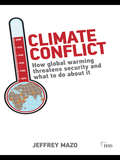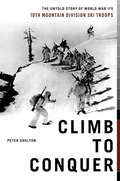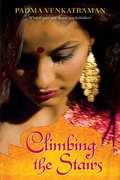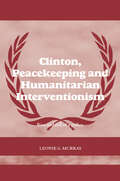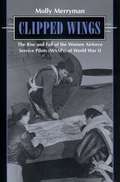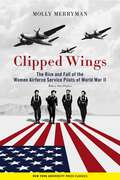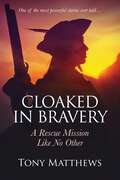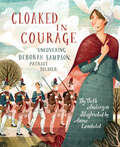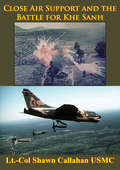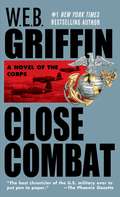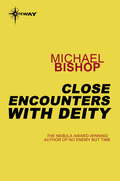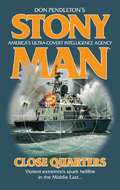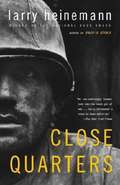- Table View
- List View
Clearing the Way: U.S. Army Engineers in World War II
by Chris McNabFinalist, 2023 Army Historical Foundation Distinguished Writing Awards Quite simply, without engineers the U.S. Army would have been unable to fight World War II. The men of the Corps of Engineers, with the strength of more than 700 battalions mobilized during World War II, were tasked with every imaginable engineering challenge. In rear areas and back in the United States they built the facilities essential for everyday military life—showers, toilets, barrack blocks, military hospitals, training camps, storage depots, and much more. To keep logistics flowing to the front, they constructed or repaired thousands of miles of roads and bridges, plus built airfields to support Allied strategic and tactical air operations. Engineers also created endless chains of defensive positions, from simple trench systems to complex bunker networks, as well as retrieving damaged vehicles and equipment from still-contested battlefields. Combat engineers, meanwhile, occupied some of the most dangerous frontline roles in the American armed forces. Heavily armed with demolitions and weapons, plus weighed down by engineering tools and even driving armored bulldozers, they were tasked with destroying enemy strongpoints, bridges, equipment, vehicles and many other obstacles to the advance, in both overland and amphibious operations. Clearing the Way: U.S. Army Engineers in World War II brings together an exceptional collection of primary sources from engineering field manuals, technical manuals, and other official publications. They provide a detailed insight into the work and skills of the U.S. Army engineers, including building a field fortification, laying and defusing mines, making a contested river crossing, or camouflaging a defensive position properly. Through these texts, we gain practical insight into the exceptional individuals who often combined first-rate infantry fighting skills with engineering skill and problem-solving ingenuity.
Cleveland in World War I (Images of America)
by Dale ThomasCleveland's contribution to the war front began on May 25, 1917, with the Lakeside Hospital Unit becoming the first American detachment to land in Europe. On the home front, the war accelerated the growth of Cleveland, which became the fifth-largest city in the nation by the end of the decade. When war broke out, Cleveland's growing industries could no longer depend on the labor emigrating from Europe. At the same time, 40,000 Clevelanders would eventually leave the workforce and serve in the military. Women replaced them in jobs that were not available in the past. Scores of African Americans left the South, and this Great Migration led to significant economic, social, and political developments in the coming years. Cleveland's ethnic neighborhoods included many who had come from the nations and regions of the Central Powers. Americanization programs taught immigrants English and patriotism.
Cleveland in World War II
by Brian Albrecht James BanksBerthed on the Cleveland lakefront, the battle-hardened submarine USS Cod serves as a proud reminder of the wartime contributions from the Greater Cleveland community. Clevelanders did their duty and more, from round-the-clock work on the factory assembly lines to the four Medal of Honor recipients on the front lines. The Cleveland Bomber Plant churned out thousands of B-29 parts, while Auto-Ordnance Co. developed the design for the Thompson submachine guns used by GIs on nearly every battlefield. Indians pitcher Bob Feller left the game to go into the service, and Clarence Jamison flew with the famed Tuskegee Airmen. Through interviews and archival material, authors Brian Albrecht and James Banks honor a time when Clevelanders of all stripes answered the call to arms.
Clever Girl: Elizabeth Bentley, the Spy Who Ushered in the McCarthy Era
by Lauren KesslerCommunists vilified her as a raging neurotic. Leftists dismissed her as a confused idealist. Her family pitied her as an exploited lover. Some said she was a traitor, a stooge, a mercenary and a grandstander. To others she was a true American heroine—fearless, principled, bold and resolute. Congressional committees loved her. The FBI hailed her as an avenging angel. The Catholics embraced her. But the fact is, more than half a century after she captured the headlines as the "Red Spy Queen," Elizabeth Bentley remains a mystery.New England-born, conservatively raised, and Vassar-educated, Bentley was groomed for a quiet life, a small life, which she explored briefly in the 1920s as a teacher, instructing well-heeled young women on the beauty of Romance languages at an east coast boarding school. But in her mid-twenties, she rejected both past and future and set herself on an entirely new course. In the 1930s she embraced communism and fell in love with an undercover KGB agent who initiated her into the world of espionage. By the time America plunged into WWII, Elizabeth Bentley was directing the operations of the two largest spy rings in America. Eventually, she had eighty people in her secret apparatus, half of them employees of the federal government. Her sources were everywhere: in the departments of Treasury and Commerce, in New Deal agencies, in the top-secret OSS (the precursor to the CIA), on Congressional committees, even in the Oval Office.When she defected in 1945 and told her story—first to the FBI and then at a series of public hearings and trials—she was catapulted to tabloid fame as the "Red Spy Queen," ushering in, almost single-handedly, the McCarthy Era. She was the government’s star witness, the FBI’s most important informer, and the darling of the Catholic anti-Communist movement. Her disclosures and accusations put a halt to Russian spying for years and helped to set the tone of American postwar political life.But who was she? A smart, independent woman who made her choices freely, right and wrong, and had the strength of character to see them through? Or was she used and manipulated by others? Clever Girl is the definitive biography of a conflicted American woman and her controversial legacy. Set against the backdrop of the political drama that defined mid-twentieth century America, it explores the spy case whose explosive domestic and foreign policy repercussions have been debated for decades but not fully revealed—until now.
CliffsNotes ASVAB AFQT Cram Plan
by Jane R Burstein Pat Proctor Carolyn WheaterGet a plan to ace the exam--and make the most of the time you have left.Whether you have two months, one month, or even just a week left before the exam, you can turn to the experts at CliffsNotes for a trusted and achievable cram plan to ace the ASVAB AFQT--without ever breaking a sweat!First, you'll determine exactly how much time you have left to prepare for the exam. Then, you'll turn to the two-month, one-month, or one-week cram plan for week-by-week and day-by-day schedules of the best way to focus your study according to your unique timeline.Each stand-alone plan includes:Diagnostic test-helps you pinpoint your strengths and weaknesses soyou can focus your review on the topics in which you need the most helpSubject reviews-cover everything you can expect on the actual exam:arithmetic reasoning, word knowledge, paragraph comprehension, andmathematics knowledgeFull-length practice test with answers and detailed explanations-a simulated ASVAB AFQT exam with scoring guide gives you an authentictest-taking experienceTest-prep essentials from the experts at CliffsNotes
CliffsNotes ASVAB AFQT Cram Plan 2nd Edition
by Pat Proctor Carolyn Wheater Jane BursteinThe perfect way to review for the AFQT whether you have two months, one month, or even one week left to prepare!The AFQT consists of four critical subtests of the ASVAB which count toward the AFQT (Armed Forces Qualifying Test) score. This score determines which U.S. service a test taker is eligible to enlist in. More than one million people per year participate in the ASVAB qualifying program. Features of this plan-to-ace-the-test product include:Timed, boxed calendars for preparing to take the test—two-month study calendar, one-month study calendar, and one-week study calendarDiagnostic test that helps test-takers pinpoint strengths and weaknesses so they can focus their review on topics in which they need the most helpSubject reviews that succinctly cover need-to-know topics on the testModel practice test with answers and explanations
CliffsNotes ASVAB Cram Plan 2nd Edition
by Carolyn Wheater American BookWorks Corporation Jane BursteinThe perfect way to study for the ASVAB whether you have two months, one month, or even one week left to prepare!The ASVAB (Armed Services Vocational Aptitude Battery) consists of ten subtests, including Electronics Information, Automotive and Shop Information, Mechanical Comprehension, and Assembling Objects, that help determine what job in the U.S. military a successful enlistee is qualified for. More than one million people per year participate in the ASVAB qualifying program. Features of this plan-to-ace-the-test product include:Timed, boxed calendars for preparing to take the test—two-month study calendar, one-month study calendar, and one-week study calendarDiagnostic test that helps test-takers pinpoint strengths and weaknesses so they can focus their review on topics in which they need the most helpSubject reviews that succinctly cover need-to-know topics on the testModel practice test with answers and explanations
Climate Change and Armed Conflict: Hot and Cold Wars (Routledge Studies in Peace and Conflict Resolution)
by James R. LeeThis book examines the evolution of the relationship between climate change and conflict, and attempts to visualize future trends. Owing to the accumulation of greenhouse gases in the atmosphere, current trends in climate change will not appreciably alter over the next half century even if drastic action is taken now. Changes in climate will produce unique types and modes of conflict, redefine the value of important resources, and create new challenges to maintaining social order and stability. This book examines the consequences of climate change and argues that it has and will produce two types of different types of conflict: 'cold wars' and 'hot wars'. Cold wars will occur in northern and southern latitudes as warming draws countries into possible conflict due to expanding interests in exploiting new resources and territories (inter-state conflict). Hot wars will break out around the equator as warming expands and intensifies dry areas, increasing competition for scarce resources (intra-state conflict). Conflict is not inevitable, but it will also be a consequence of how states, international institutions and people react to changes in climate. Climate change and conflict have always shaped human experiences. This book lays out the parameters of the relationship, shows its history, and forecasts its trends, offering future conditions and opportunities for changing the historical path we are on. This book will be of great interest for students of climate change and environmental security, peace and conflict studies, and IR/security studies in general. James R. Lee is a Professor in the School of International Service, American University, Washington, DC and Associate Director of American University's Center for Teaching Excellence. He is author of several books on international relations, including, most recently, Exploring the Gaps: Vital Links Between Trade, Environment and Culture (2000).
Climate Conflict: How Global Warming Threatens Security and What to Do about It (Adelphi series)
by Jeffrey MazoClimate change has been a key factor in the rise and fall of societies and states from prehistory to the recent fighting in the Sudanese state of Darfur. It drives instability, conflict and collapse, but also expansion and reorganisation. The ways cultures have met the climate challenge provide lessons for how the modern world can handle the new security threats posed by unprecedented global warming. Combining historical precedents with current thinking on state stability, internal conflict and state failure suggests that overcoming cultural, social, political and economic barriers to successful adaptation to a changing climate is the most important factor in avoiding instability in a warming world. The countries which will face increased risk are not necessarily the most fragile, nor those which will suffer the greatest physical effects of climate change. The global security threat posed by fragile and failing states is well known. It is in the interest of the world’s more affluent countries to take measures both to reduce the degree of global warming and climate change and to cushion the impact in those parts of the world where climate change will increase that threat. Neither course of action will be cheap, but inaction will be costlier. Providing the right kind of assistance to the people and places it is most needed is one way of reducing the cost, and understanding how and why different societies respond to climate change is one way of making that possible.
Climb to Conquer: The Untold Story of WWII's 10th Mountain Division Ski Troops
by Peter SheltonFew stories from the "greatest generation" are as unforgettable -- or as little known -- as that of the 10th Mountain Division. Today a versatile light infantry unit deployed around the world, the 10th began in 1941 as a crew of civilian athletes with a passion for mountains and snow. In this vivid history, adventure writer Peter Shelton follows the unique division from its conception on a Vermont ski hill, through its dramatic World War II coming-of-age, to the ultimate revolution it inspired in American outdoor life.In the late-1930s United States, rock climbing and downhill skiing were relatively new sports. But World War II brought a need for men who could handle extreme mountainous conditions -- and the elite 10th Mountain Division was born. Everything about it was unprecedented: It was the sole U.S. Army division trained on snow and rock, the only division ever to grow out of a sport. It had an un-matched number of professional athletes, college scholars, and potential officer candidates, and as the last U.S. division to enter the war in Europe, it suffered the highest number of casualties per combat day. This is the 10th's surprising, suspenseful, and often touching story.Drawing on years of interviews and research, Shelton re-creates the ski troops' lively, extensive, and sometimes experimental training and their journey from boot camp to the Italian Apennines. There, scaling a 1,500-foot "unclimbable" cliff face in the dead of night, they stunned their enemy and began the eventual rout of the German armies from northern Italy.It was a self-selecting elite, a brotherhood in sport and spirit. And those who survived (including the Sierra Club's David Brower, Aspen Skiing Corporation founder Friedl Pfeifer, and Nike cofounder Bill Bowerman, who developed the waffle-sole running shoe) turned their love of mountains into the thriving outdoor industry that has transformed the way Americans see (and play in) the natural world.
Climbing the Stairs
by Padma VenkatramanRead Padma Venkatraman's posts on the Penguin Blog. Fifteen-year-old Vidya dreams of going to college-- an unusual aspiration for a girl living in British occupied India during World War II. Then tragedy strikes, and Vidya and her brother are forced to move into a traditional household with their extended family, where women are meant to be married, not educated. Breaking the rules, Vidya finds refuge in her grandfather's library. But then her brother does something unthinkable, and Vidya's life becomes a whirlwind of political and personal complications. The question is, will she be strong enough to survive? Watch a Video
Clinton's Foreign Policy: Between the Bushes, 1992-2000 (Contemporary Security Studies)
by John DumbrellThis volume is a detailed account of President Clinton's foreign policy during 1992-2000, covering the main substantive issues of his administration, including Iraq, Bosnia and Kosovo. The book emphasizes Clinton's adaptation of the elder Bush's 'New World Order' outlook and his relationship to the younger Bush's 'Americanistic' foreign policy. In doing so, it discusses in detail such key policy areas as foreign economic policy; humanitarian interventionism; policy towards Russia and China, and towards European and other allies; defence priorities; international terrorism; and peacemaking. Overall, the author judges that Clinton managed to develop an American foreign policy approach that was appropriate for the domestic and international conditions of the post-Cold War era. This book will be of great interest to students of Clinton's administration, US foreign policy, international security and IR in general. John Dumbrell is Professor of Government at Durham University. He specialises in the study of US foreign policy.
Clinton, Peacekeeping and Humanitarian Interventionism: Rise and Fall of a Policy (Cass Series on Peacekeeping)
by Leonie MurrayThis volume re-examines the evidence surrounding the rise and fall of peacekeeping policy during the first Clinton Administration. Specifically, it asks: what happened to cause the Clinton Executive to abandon its previously favoured policy platform of humanitarian multilateralism? Clinton, Peacekeeping and Humanitarian Interventionism aims to satisfy a large gap in our understanding of events surrounding 1990s peacekeeping policy, humanitarian intervention and the Rwandan genocide, as well as shedding some light on US policy on Africa, and the issues surrounding the current peacekeeping debate. Leonie Murray takes an unorthodox stance with regard to the role of public opinion on peacekeeping policy, and delves deeper into the roles that the legislature, the military, and in particular, the executive had to play in the development of US peacekeeping policy in the 1990s. The conclusions reached concerning the role of the United States and the International Community in the face of the Rwandan Genocide are of particular note in their departure from the accepted wisdom on the subject. This book will be of interest to students of peacekeeping, international relations, US foreign policy and humanitarian intervention.
Clipped Wings: The Rise and Fall of the Women Airforce Service Pilots (WASPs) of World War II
by Molly MerrymanDuring World War II, all branches of the military had women's auxiliaries. Only the Women Airforce Service Pilot (WASP) program, however, was comprised entirely of women who flew dangerous missions more commonly associated with and desired by men. Within military hierarchies, the World War II pilot was projected as the most dashing and desirable of servicemen. "Flyboys" were the daring elite of the United States military. More than the WACs (Army), WAVES (Navy), SPARS (Coast Guard), or Women Marines, the WASPs directly challenged these assumptions of male supremacy in wartime culture. WASPs flew the fastest fighter planes and heaviest bombers; they test-piloted experimental models and worked in the development of weapons systems. Yet the WASPs were the only women's auxiliary within the armed services of World War II that was not militarized. In Clipped Wings, Molly Merryman draws upon military documents (many of which were declassified only in the 1980s), congressional records, and interviews with the women who served as WASPs during World War II, to trace the history of the over 1,000 pilots who served their country as the first women to fly military planes. She examines the social pressures which culminated in their disbandment in 1944-even though a wartime need for their services still existed-and documents their struggles and eventual success, in 1977, to gain military status and receive veterans benefits.
Clipped Wings: The Rise and Fall of the Women Airforce Service Pilots (WASPs) of World War II (WASPs)
by Molly MerrymanRevives the overlooked stories of pioneering women aviators, who are also featured in the forthcoming documentary film Coming Home: Fight for a LegacyDuring World War II, all branches of the military had women's auxiliaries. Only the Women Airforce Service Pilots (WASP) program, however, was made up entirely of women who undertook dangerous missions more commonly associated with and desired by men. Within military hierarchies, the World War II pilot was perceived as the most dashing and desirable of servicemen. "Flyboys" were the daring elite of the United States military. More than the WACs (Army), WAVES (Navy), SPARS (Coast Guard), or Women Marines, the WASPs directly challenged these assumptions of male supremacy in wartime culture. WASPs flew the fastest fighter planes and heaviest bombers; they test-piloted experimental models and worked in the development of weapons systems. Yet the WASPs were the only women's auxiliary within the armed services of World War II that was not militarized. In Clipped Wings, Molly Merryman draws upon military documents—many of which weren’t declassified until the 1990s—congressional records, and interviews with the women who served as WASPs during World War II to trace the history of the over one thousand pilots who served their country as the first women to fly military planes. She examines the social pressures that culminated in their disbandment in 1944—even though a wartime need for their services still existed—and documents their struggles and eventual success, in 1977, to gain military status and receive veterans’ benefits.In the preface to this reissued edition, Merryman reflects on the changes in women’s aviation in the past twenty years, as NASA’s new Artemis program promises to land the first female astronaut on the moon and African American and lesbian women are among the newest pilot recruits. Updating the story of the WASPs, Merryman reveals that even in the past few years there have been more battles for them to fight and more national recognition for them to receive. At its heart, the story of the Women Airforce Service Pilots is not about war or planes; it is a story about persistence and extraordinary achievement. These accomplished women pilots did more than break the barriers of flight; they established a model for equality.
Cloak: Star Trek The Original Series (Star Trek: The Original Series)
by S.D. PerryNO LAW. NO CONSCIENCE. NO STOPPING THEM.They are the self-appointed protectors of the Federation. Amoral, shrouded in secrecy, answerable to no one, Section 31 is the mysterious covert operations division of Starfleet, a rogue shadow group committed to safeguarding the Federation at any cost. Once, in order to preserve the galaxy's fragile balance of power, Captain James T. Kirk carried out a dangerous mission to capture a cloaking device from the Romulan Star Empire. Months later, while investigating a mysterious disaster aboard a Federation starship, Kirk discovers that the same technology he obtained for the sake of peace is being put to sinister purposes. What the crew of the Starship Enterprise™ uncovers will send shock waves through the quadrant, as Section 31 sets in motion a plan that could bring the major powers of the galaxy to their knees.
Cloaked in Bravery: A Rescue Mission Like No Other
by Tony MatthewsExperience the extraordinary journey of a woman who risked everything to follow her man into battle in a desperate attempt to rescue him from the death that inevitably beckoned. Christian, driven by an unwavering devotion to her missing husband, cast aside her comfortable life, family, and even her children to venture into the heart of battle. Disguised as a man, a common foot-soldier, Christian embraced the chaos and carnage of European history's bloodiest conflicts. With a fiery spirit and indomitable courage, she fought alongside men, facing musket-fire, swords, and cannonballs, all in a quest to ensure her husband's survival. Her rollicking good humour, captivating charm, and steely-eyed determination endeared her to comrades and enemies alike. Christian's selflessness knew no bounds. Despite enduring grave wounds, she refused to be deterred, persevering through unimaginable pain. She embodied the strength of a man and the passion of a woman, fearlessly aiding wounded comrades on the battlefield, regardless of the peril she faced. Unveiling a hidden gem of military history, Cloaked in Bravery reveals the compelling tale of a remarkable woman whose devotion and valour transcended the confines of gender. Prepare to be captivated by Christian Davies, as her story unveils a love so powerful it defied all odds.
Cloaked in Courage: Uncovering Deborah Sampson, Patriot Soldier
by Beth AndersonThe remarkable story of Deborah Sampson, a woman who fought in the American Revolution disguised as a man—and who ends up finding her true identity and purpose in life.Deborah Sampson didn&’t like being told what to do, especially by the King of England. Fiercely independent, 18-year-old Deborah enlists as Robert Shurtliff in George Washington&’s Continental Army to fight for her country&’s independence. But being a soldier is hard, dangerous work. Can she fight for her country and keep her identity a secret? Can she also discover who she really is and find her true purpose? This unbelievable story from American history about a woman with a rebel spirit will inspire and enlighten young readers. &“Cloaked in Courage is inspiring storytelling centering the life and actions of a brave woman and soldier, Deborah Sampson. Anderson&’s contribution brings to light a lesser-known hero in history and emphasizes the importance of historical investigation and research.&” —Lori Ann Terjesen, director of education, National Women&’s History Museum
Close Air Support And The Battle For Khe Sanh [Illustrated Edition]
by Lt.-Col Shawn Callahan USMCIncludes 7 maps, 3 tables, and more than 80 photo illustrations.In the 77 days from 20 Jan. to 18 March of 1968, two divisions of the North Vietnamese Army (NVA) surrounded a regiment of U.S. Marines on a mountain plateau in the northwest corner of South Vietnam known as Khe Sanh. The episode was no accident; it was in fact a carefully orchestrated meeting in which both sides got what they wanted. The North Vietnamese succeeded in surrounding the Marines in a situation in many ways similar to Dien Bien Phu, and may have been seeking similar tactical, operational, and strategic results. General William C. Westmoreland, the commander of the joint U.S. Military Assistance Command Vietnam (COMUSMACV), meanwhile, sought to lure the NVA into the unpopulated terrain around the 26th Marines in order to wage a battle of annihilation with air power. In this respect Khe Sanh has been lauded as a great victory of air power, a military instrument of dubious suitability to much of the Vietnam conflict. The facts support the assessment that air power was the decisive element at Khe Sanh, delivering more than 96 percent of the ordnance used against the NVA.Most histories of the battle, however, do not delve much deeper than this. Comprehensive histories like John Prados and Ray Stubbe's Valley of Decision, Robert Pisor's End of the Line, and Eric Hammel's Siege in the Clouds provide excellent accounts of the battle, supported by detailed analyses of its strategic and operational background but tend to focus on the ground battle and treat the application of air power in general terms. They do not, however, make significant distinction between the contributions of the two primary air combat elements in this air-land battle: the 7th Air Force and the 1st Marine Air Wing. An analysis of their respective contributions to the campaign reveals that they each made very different contributions that reflected very different approaches to the application of air power.
Close Combat
by W.E.B. GriffinAs Japanese forces close in for an all-out effort to recapture Guadalcanal from the American forces occupying the island, many fates converge and intertwine. First Lieutenant William Dunn, twenty-one years old but already one of the only two pilots remaining from his fighter squadron's original sixteen, must learn what it is like to lead men -- and to lose them. Hot-tempered Sergeant Thomas McCoy finds he has a hero's welcome waiting stateside -- if he can avoid a court-martial first. On a bloody island, Major Jake Dillon discovers just how much combat is involved in a combat correspondent's life. First Lieutenant R. B. Macklin, a consummate bully, is put on a War Bond tour so he will not endanger his own men. General Fleming Pickering, on a ticklish diplomatic mission, attempts to balance the hot and mighty temperaments of General Douglas MacArthur, OSS Chief William "Wild Bill" Donovan and Secretary of the Navy Frank Knox. Corporal Robert Easterbrook, still wet behind the ears, discovers that the price of success in wartime may be uncomfortably high. From the Solomons to Australia to Washington, D. C. , the warriors, plus the wives and sweethearts who love them, once more find themselves with the challenges of their lives. . .
Close Encounter
by Caliente MorganHot Cop Series - Tough, sexy men in uniform - The strong women who love them Three Short Stories: Close Encounter Alicia Morgan Babcock, a slightly OCD ADHD mature woman trying to keep order in her life, is running errands. Sergeant David Owens hadn't meant to get involved in anything when he stopped at the bank. He certainly hadn't planned on getting shot by a protected witness. It was a life-altering experience, they said. They got that right! Now he has to choose. Should he stay with his career, or join the woman who saved his life in exile? The Italian Job As a writer, Sally-Ann Mayfield found herself in another banquet room atg a conference, and goes fan-girl at the sight of the Italian heartthrob, Mario Alonzo. He takes note of the one woman who had recognized him. A lot of note. After a dinner, a long conversation, and little too much Italian wine, can he talk her into leaving everything she knows behind and fly away with him to Rome?Act Now, Think Later When Miriam Evans rescues a fallen officer, it isn't her skill with a weapon that he remembers. Once out of rehab, Brett Stevens makes a beeline to her front door. Because the curves on his rescuer had eclipsed her skill with a gun. And a reprimand was worth it to get a peek under her shirt. Would she want more than a simple thank you?
Close Encounters With the Deity
by Michael BishopThrough the means of what he calls "speculative fiction", Michael Bishop examines the various links between man and the supernatural by exploring the relationships and conflicts between mortals and deities of other worlds, in other times and within other cultures. His scope isn't limited to alien environments, however. Bishop's talent for transforming the commonplace into the fantastic often reaches into our own backyards, and the results are astounding:- A father's love for his son and the influence of the evangelist's strange teachings prompt a desperate and violent act.- In a surreal world of unceasing movies where the inhabitants serve constantly as an audience, one man seeks to confront he ultimate power which controls their lives.- A young boy's talent for ventriloquism results in an irresistible summons from an all-powerful source.- A Midwestern farmer's compelling visions draw him to the oceanic god of an unusual cult.- Mysterious airborne hieroglyphics become a young scientist's obsession. With these and other stories, Michael Bishop weaves a colourful tapestry of character, theme and circumstance which attests to his position as on of the best in the field.
Close Quarters
by Don PendletonAn elite covert special ops team, Stony Man acts only under presidential directive. Backed by a sophisticated unit of cybernetics and weapons experts, Able Team and Phoenix Force fight terror across the globe. They operate with impunity, driven by grit and the instinct of true warriors dedicated to protecting the innocent.When Peace Corps volunteers working in the jungles of Paraguay are kidnapped and brutalized by a mysterious new Islamic terrorist group-and political maneuvering fails-Stony Man gets the call. Its dual mission: an under-the-radar jungle rescue and a hunt along the Iranian shores and backstreets of Tehran for the terrorist masterminds. With the enemy's hard-line agenda poised to fuel the powder keg of Middle East instability, Stony Man moves in against long odds that are only getting longer. Surrounded and outgunned, they're willing to make the ultimate sacrifice to succeed.
Close Quarters
by Larry HeinemannFrom the moment his first novel was published, Larry Heinemann joined the ranks of the great chroniclers of the Vietnam conflict--Philip Caputo, Tim O'Brien, and Gustav Hasford. In the stripped-down, unsullied patois of an ordinary soldier, draftee Philip Dosier tells the story of his war. Straight from high school, too young to vote or buy himself a drink, he enters a world of mud and heat, blood and body counts, ambushes and firefights. It is here that he embarks on the brutal downward path to wisdom that awaits every soldier. In the tradition of Naked and the Dead and The Thin Red Line, Close Quarters is the harrowing story of how a decent kid from Chicago endures an extraordinary trial-- and returns profoundly altered to a world on the threshold of change.
Close to Home: A heartbreaking saga of intrigue, tragedy and an impossible love
by Pamela EvansA terrible accident. A convicted murderer. An impossible love. A heart-breaking saga from much-loved author, Pam Evans, Close to Home is a gripping tale of intrigue and love, perfect for fans of Dilly Court and Rosie Goodwin. 'A compelling book' - Woman's RealmIn 1957, Ellie and Tom Hall are happily married. With a home of their own in Shepherd's Bush and a beautiful baby daughter, Ellie feels truly blessed and has faith in their future - a future which is cruelly snatched away when a terrible car accident leaves Tom brain-damaged and institutionalised. Months later, Ellie is slowly learning to live without him and focuses on her thriving knitwear business. Convicted for a murder he has always denied committing, when Ray Brent is released from prison he is ostracised by the community as he tries to rebuild his life. But he finds a loyal supporter in Ellie when she is witness to a vicious attack on him. Something about him makes her believe in his innocence and the two soon become friends. But it's only a matter of time before friendship becomes an impossible love... What readers are saying about Close to Home: 'Love it''Five stars'
